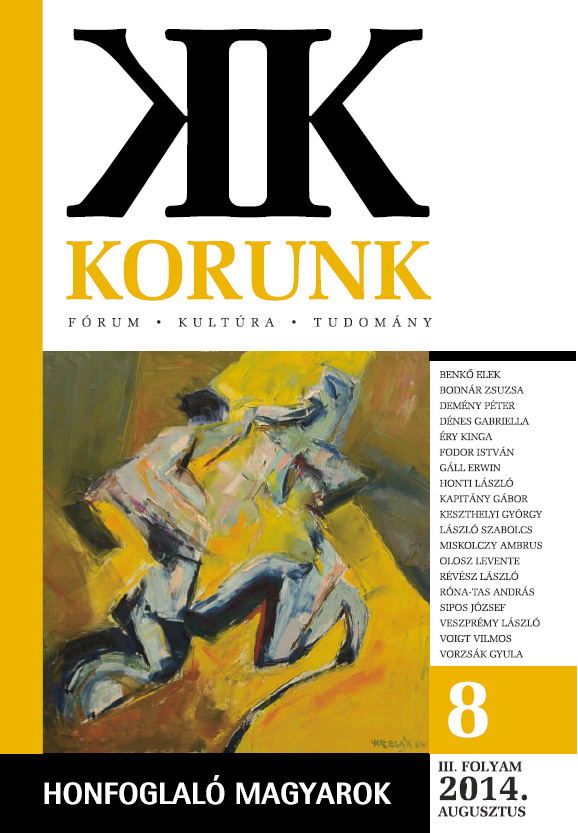A periferikus 10. századi Erdélyi-medence. Néhány gondolat a 10. századi „magyar hatalmi hálózat” erdélyi hódításáról
The Peripheral Transylvania: Thoughts on the Expansion of the “Hungarian Power System” in Transylvania in the 10th Century
Author(s): Erwin GállSubject(s): History, Middle Ages
Published by: Korunk Baráti Társaság
Keywords: Transylvania; 10th century; periphery; Hungarian power system;
Summary/Abstract: At the beginning of the 10th century, Hungarians and Turks, who conquered the Carpathian Basin, created a complicated polit-ical-military model, in which the so-called “warrior society” communities also took part, but apart from them, there were social classes leading a settled lifestyle, who engaged themselves with agriculture, commerce etc. In the chronological analysis of the 10th century finds carried out so far, we have managed to detect the concentration of the items indicating social status (ornamented sabres, studded belts and ornamented mount sabretaches) in a core region, namely the Upper Tisza/Tisa region. However, according to the archaeological finds, there could have been several peripheral centres existing be- sides this centre, and there could have been areas dependent of these centres, forming a functional unit. In the case of cemeteries in the Cluj- Napoca/Kolozsvár micro-region, a con- centration of burials with horses and weapons can be detected, which, according to our opinion, can be interpreted as the remains of a once-existing military centre. These ceme-teries do not excel with the richness of precious metals, but with the amount and association of a variety of different weapon categories. From these observations concerning the professional warrior class of the 10th century power centre, one can infer to the existence a greatly varied population with individuals of different origins. The possibility of the existence of a cemetery belonging to the military entourage might arise in connection with the two horse burials found on the highest point of Alba Iulia/Gyulafehérvár. With archaeological means (from an archaeological point of view, this being a new representative material), we found out that the Hungarians conquering the Carpathian Basin established military centres in the eastern part of the Basin (Upper Tisza/Tisa region, Cluj- Napoca/Kolozsvár, Biharea/Bihar), which concentrated significant military potential. In contrast with the stereotypes still prevalent, these areas were not destroyed, but integrated, and drew in (also) the Eastern trade, as well as from the whole of Eastern Europe, even up to Scandinavia. Practi-cally, these centres changed the cultural character of the region. At the same time, as a result of previous military events in the Carpathian Basin, these centres also must have increased considerably the number of common people through a slow but sure integration process, by conquering the populations living in the region. The assimilation can be detected archaeologically in the border areas of the Carpathian Basin and in the case of some of the cemeteries in the Transylvanian Basin.
Journal: Korunk
- Issue Year: 2014
- Issue No: 08
- Page Range: 82-95
- Page Count: 14
- Language: Hungarian

